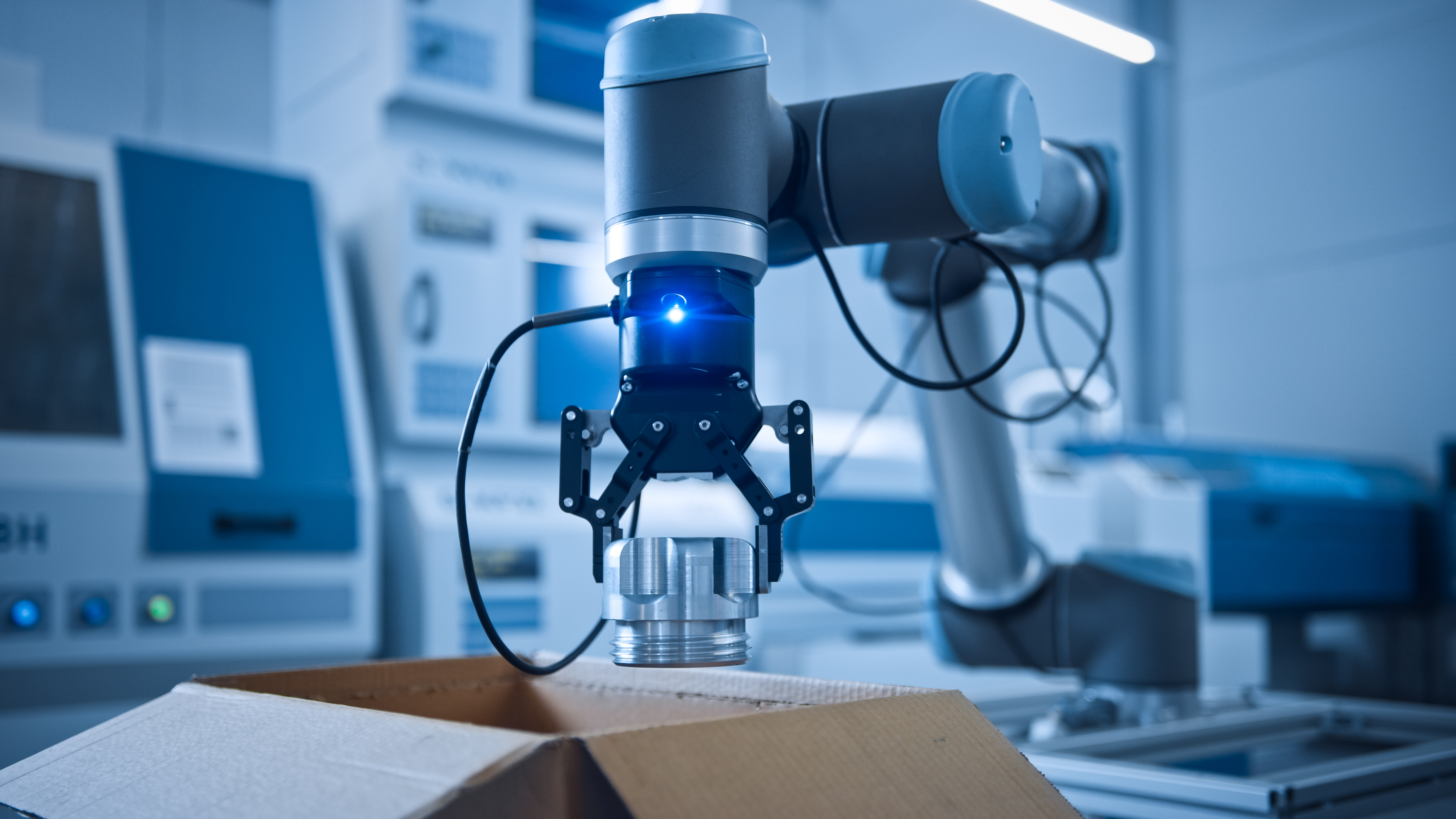Robotiq I/O Coupling: A New Cable Management Solution

Posted on Oct 29, 2019 11:33 AM. 2 min read time
Robots are an integral part of modern manufacturing processes, but one problem has plagued users from the start: cable management.
Multi-axis robots—such as those used in machine-tending, assembly, packaging, palletizing, and pick-and-place applications—present a unique challenge for their designers and operators, who must figure out how to manage cables without interfering with the robot’s movement.
While this may seem like a trivial concern, the fact is that cable management problems are one of the biggest source of unexpected downtime in robotic cells. There are so many ways for them to go wrong: cables can create pinch points, limit robot mobility, or become jammed, bent, crushed, cut, or otherwise damaged. Plus, loosely attached cables also pose a safety risk.
People have devised their own ways around this problem, setting up cable-management contraptions made of corrugated tubing, fabric sleeves, bungee cords, zip ties, Velcro, and of course, duct tape.
The new Robotiq I/O Coupling presents a better solution. Designed to allow direct connection of Robotiq grippers (2F, Hand-E, EPick, and AirPick) to Omron TM collaborative robots, it eliminates the need to run a cable along the cobot arm, and thus resolves the many problems associated with cable management.
The I/O Coupling features industrial-grade components capable of withstanding harsh work environments and intensive use. For example, it’s a perfect fit with Robotiq’s Hand-E gripper, which is rated IP67 and often used for CNC machine-tending applications.
The I/O Coupling stores four “presets,” or default setting options for the gripper parameters (for adaptive grippers, these are position, force, and speed; for vacuum grippers, automatic vs. manual modes, and vacuum levels). The presets are easy to change within the Robotiq User Interface, which simply requires connecting the I/O Coupling to a PC.
At last, cobot users can kiss cables goodbye and do away with one of the biggest source of unexpected downtime. The problem of cable management was created by technology, so it’s only fitting that newer and better technology—the Robotiq I/O Coupling—is the solution.










Leave a comment